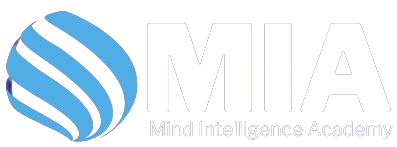Cleaning and Maintaining Hardware Components
- Cleaning the Interior:
- Tools Needed: Compressed air, soft brushes, lint-free cloths, isopropyl alcohol.
- Steps:
- Turn off and unplug the computer.
- Open the case and use compressed air to blow out dust from components, focusing on fans and heat sinks.
- Use soft brushes to gently clean hard-to-reach areas.
- Clean fan blades and case vents with a lint-free cloth dampened with isopropyl alcohol.
- Cleaning Peripherals:
- Keyboard: Turn it upside down and shake out debris, use compressed air between keys, and wipe with a damp cloth.
- Mouse: Clean the sensor with a soft cloth, wipe the exterior, and use compressed air to remove dust from the scroll wheel.
- Monitor: Use a microfiber cloth to wipe the screen and a damp cloth for the frame.
Best Practices for Extending Hardware Lifespan
- Regular Cleaning: Keep the interior and exterior of the computer clean to prevent dust buildup and overheating.
- Proper Ventilation: Ensure good airflow by placing the computer in a well-ventilated area and not blocking vents.
- Avoid Overloading: Do not exceed the power supply’s capacity and ensure components are compatible with the motherboard and PSU.
- Use Surge Protectors: Protect your computer from power surges and electrical damage.
- Safe Handling: Avoid static discharge by grounding yourself before touching internal components. Use anti-static wrist straps if necessary.
- Update Firmware and Drivers: Keep BIOS/UEFI firmware and drivers up-to-date for optimal performance and security.
- Monitor Temperatures: Regularly check CPU, GPU, and system temperatures using monitoring tools to prevent overheating.
- Backup Data: Regularly back up important data to prevent loss in case of hardware failure.
Final Project: Building a Basic PC
Assemble a Functional Computer from Individual Components
- Components Required:
- CPU, motherboard, RAM, storage device (HDD/SSD), PSU, case, cooling system (fans/heat sinks), graphics card (if not using integrated graphics), peripherals (keyboard, mouse, monitor).
- Steps to Assemble:
- Prepare the Case: Open the case and install the power supply.
- Install the Motherboard: Secure the motherboard to the case with screws.
- Install the CPU: Carefully place the CPU into the motherboard socket and secure it.
- Install RAM: Insert the RAM modules into the appropriate slots.
- Install Storage Devices: Mount HDD/SSD and connect them to the motherboard.
- Install the Graphics Card: If using a dedicated GPU, insert it into the appropriate PCIe slot.
- Connect Power Cables: Connect PSU cables to the motherboard, CPU, GPU, and storage devices.
- Install Cooling Systems: Attach fans or heat sinks as needed for cooling.
- Connect Peripherals: Attach the keyboard, mouse, and monitor to the computer.
- Power On and Install OS: Power on the computer and install the operating system.
Present the Assembled Computer and Explain Each Component’s Role
- CPU: The central processing unit, responsible for executing instructions.
- Motherboard: The main circuit board that connects all components and allows communication.
- RAM: Temporary memory that stores data for quick access by the CPU.
- Storage: Permanent memory that holds the operating system, applications, and data.
- PSU: Supplies power to all components.
- Cooling System: Maintains optimal temperatures to prevent overheating.
- Graphics Card: Renders images and video for display.
- Peripherals: Input and output devices used to interact with the computer.
Final Quiz: Comprehensive Hardware Knowledge
- Multiple Choice Questions:
- What is the primary cause of a computer overheating?
- A) Insufficient power supply
- B) Dust buildup and poor ventilation
- C) Faulty RAM
- D) Outdated drivers
- Which tool is used to check and repair disk errors in Windows?
- A) MemTest86
- B) CrystalDiskInfo
- C) CHKDSK
- D) Driver Booster
- What is the primary cause of a computer overheating?
- Short Answer Questions:
- Explain the steps involved in diagnosing a no-power issue in a computer.
- Describe the best practices for cleaning a computer’s interior components.
- What are the advantages of regularly updating firmware and drivers?

